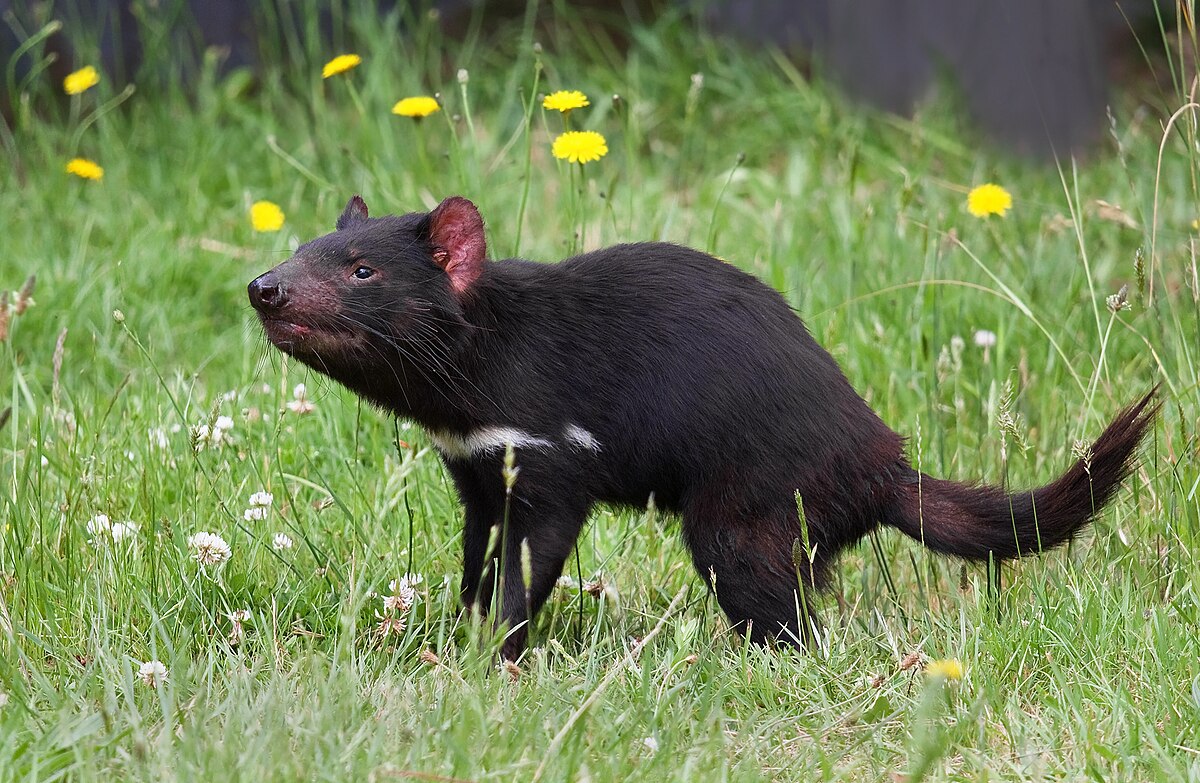
The Devil You Know: Unveiling the Misunderstood Tasmanian Devil
Tasmanian devils. The name alone conjures images of ferocious beasts, fueled by the iconic cartoon character. But the truth about these marsupials is far more fascinating – and a little less devilish.
A Stocky Powerhouse
Tasmanian devils (Sarcophilus harrisii) hold the title of the largest surviving carnivorous marsupial. Imagine a stocky, muscular build with a large head and a tail balancing things out (about half its body length). Unlike most marsupials, their forelegs are slightly longer than their hind legs, allowing them to burst into short sprints of up to 13 km/h (8.1 mph) when needed.
Black Beauties (with Occasional Markings)
Their fur is typically a sleek black, sometimes adorned with irregular white patches on the chest and rump. Interestingly, about 16% of wild devils lack these white markings. Theories suggest these markings might be linked to their activity patterns, with the lighter fur offering some camouflage during dawn and dusk ventures. Additionally, some believe the white patches serve as a “target” during fights, drawing bites away from more vital areas – a kind of natural armor!

A Storied Past
Once widespread across mainland Australia, Tasmanian devils are now confined to the island state of Tasmania. Fossil records suggest they arrived there around 15,000 years ago, following the extinction of a larger, marsupial predator – the Tasmanian tiger. This freed them from competition, allowing them to thrive in their new island home.
Nature’s Scavengers
Despite their fearsome reputation, Tasmanian devils are actually scavengers, playing a vital role in the Tasmanian ecosystem. They primarily feast on carrion (dead animals), helping to clean up the environment and prevent the spread of disease. However, they’re not averse to a bit of fresh meat – they’ll readily hunt small mammals and scavenge for leftover prey from quolls and Tasmanian devils.
The Screaming Symphony
One of the most distinctive features of the Tasmanian devil is its bloodcurdling scream. These loud vocalizations serve several purposes, including attracting mates, establishing dominance, and defending territories. When a group of devils descends upon a carcass, the ensuing cacophony can be quite a spectacle (and perhaps a little unnerving!).
Facing the Devil’s Challenge
Sadly, the Tasmanian devil is facing a serious threat – Devil Facial Tumour Disease (DFTD). This contagious cancer spreads rapidly through the population, causing facial tumours that ultimately lead to death. This disease has caused a dramatic decline in devil numbers, highlighting the fragility of island ecosystems. The IUCN Red List has classified the Tasmanian devil as endangered.
A Fight for Survival
Conservation efforts are underway to ensure the survival of these remarkable creatures. Programs include captive breeding, research into DFTD, and the reintroduction of healthy devils to mainland Australia, where they can play their vital ecological role once again.
Beyond the Myth
Tasmanian devils are more than just ferocious movie characters. They are intelligent, adaptable animals with a crucial role to play in their environment. By understanding and appreciating these fascinating marsupials, we can help ensure their survival for generations to come.
What You Can Do to Help:
- Support organizations working on Tasmanian devil conservation.
- Spread awareness about the threats they face.
- Choose eco-friendly travel options when visiting Tasmania.
Together, we can ensure that the “devil” we know continues to thrive in the wild, not just on the silver screen.
More photos below ↓
















